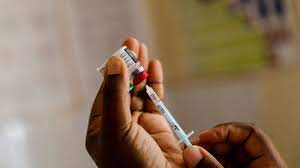Indian angel providing wings to war-torn Ukrainians
Images of wounded troops and civilians in need of amputations have been among the most heartbreaking of the conflict in Ukraine. Since Russia started their full-scale invasion of Ukraine in February 2022, an estimated 20,000 people have received amputations. Because of this, there is a huge demand for prostheses, and by 2023, wait periods in certain parts of Ukraine might reach six months.

Worries have been exacerbated by the war’s lack of qualified technicians.
Enter the Indian angel Nagender Parashar, who studied at the National Aviation University of Kyiv after relocating to the country in 1991. Since he began producing prosthetics in 2010, ten prosthetics centers with prosthetists designing and manufacturing prostheses have been established around Ukraine. He also owns and operates a plant that makes prosthetic components. “Managing the influx of patients has become challenging at my prosthetics centers these days due to the extreme rush,” adds Parashar. He continues, “Prosthetists are having to work overtime, especially due to the war’s effects on manpower shortages and the rising number of injured soldiers.”
The adversary is time. Good prostheses are made over time. And things are becoming more problematic considering the limitations that Ukraine is now dealing with. Repeat patients at our centers are typical since the stump size in amputees continues becoming smaller. However, the whole process is becoming congested as the number of new patients rises, according to Parashar. “Young children present unique challenges because of the rapid changes in their stump sizes.”
robotic soldiers
“After a mission, a soldier who had received my prostheses came to thank me.” He walked on a land mine that was a booby-trap while on reconnaissance. However, Parashar relates, “the screws beneath his prosthetic foot prevented the trap wire from tripping in some way.”
Nagendra
Alongside Ukrainian PM Denys Shmyhal, Parashar recently traveled to Japan to take part in the signing of a collaboration agreement for the manufacture of lower limb prosthetics in Ukraine. “I manufacture top-notch prosthetic limbs in Ukraine. The procedure of making the prosthetic sockets that suit the patients’ stumps, however, requires the greatest amount of physical labor. It takes many days to complete. The newest Japanese technology, however, allows us to map the pressure spots for suitable prostheses using artificial intelligence (AI) and employ 3D printers to scan and create prosthesis sockets. This will result in significant time savings and a significant reduction in patient waitlists.
India gains from the experience of Ukraine
In addition, Parashar is now establishing a prosthetics plant in Faridabad. India cannot provide prosthesis of the caliber that we are producing in the Ukraine. In order to create high-quality prostheses, I have been teaching people here, and I am also bringing in machinery from the US for this purpose, says Parashar.
This will have a significant positive impact on Indian patients’ capacity to purchase prosthetics and related services. High-quality imported prostheses must now be returned to the foreign producing nations for changes, a process that may take up to three months. However, my goal with Made in India is to provide the same superior prostheses here and reduce the amount of time needed for maintenance to a few days.
Life carries on.
Parashar remarks that residents in Ukraine have become used to bombs dropping. Iranian Shahed drones have been flying over my home. Hours pass while air raid sirens sound. Strikes by Russian missiles might occur at any moment. However, Ukrainians have learned to handle this circumstance with bravery and elegance. It is a symbol of their resistance and a lesson to the rest of the world.







